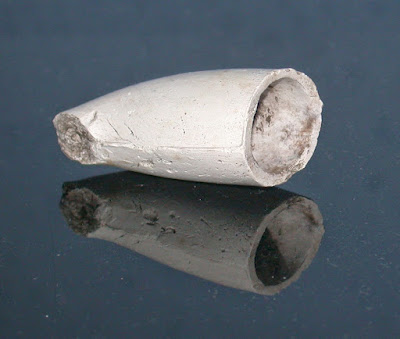Now I am back with those ever-popular history walks which wander down Chorlton’s past.
| Mr. Higginbotham ploughing Row Acre, Beech Road, 1894 |
So, on December 4th it will be the turn of Beech Road, and in the company of a distinguished couple of authors and lots of interested residents we will walk the past from Barlow Moor Road, down to Chorlton Green.
The stroll will introduce you to the “slaughterhouse”, a lost fishpond, a handful of rebellious school students and the mysterious clay pipe.
Fans of the walks will instantly recognise that mix of silly stories, sound historical accounts of when we were a rural community and that bit of outrageous entrepreneurial flare which links the walks to the publication of yet another Simpson and Topping history book.
 |
| Mr. Gratrix's clay pipe, found on Beech Road, 2014 |
All you need do is sign up .....pay your fiver and you get the book for free.
Or if you have already bought the book, bring it along as your free pass for The Walk.
It couldn’t be simpler.
So if you enjoyed our Narnia tale on the Green, shuddered at the horrible murders of Mary More and Francis Deacon and were incensed at the Chorlton Burial Scandal then this walk follows the tradition.
Details of how to sign up for the walk are on our poster, along with how to contact us.*
 |
| I'm coming on the walk, the Rec, 2022 |
Location; Beech Road
Pictures; Ploughing Row Acre before it became the Recreation Ground, 1896 Mr Higginbotham's farmyard, circa 1880s, from the collection of William Higginbotham, Mr. Gratrix's clay pipe, 2014 When litter can be silly, Chorlton, 2022from the collection of Andrew Simpson
*“nothing to do in chorlton Down Beech Road Looking for Chorlton Row” by Andrew Simpson & Peter Topping, costs £4.99, and is available from www.pubbooks.co.uk and Chorlton Bookshop










































